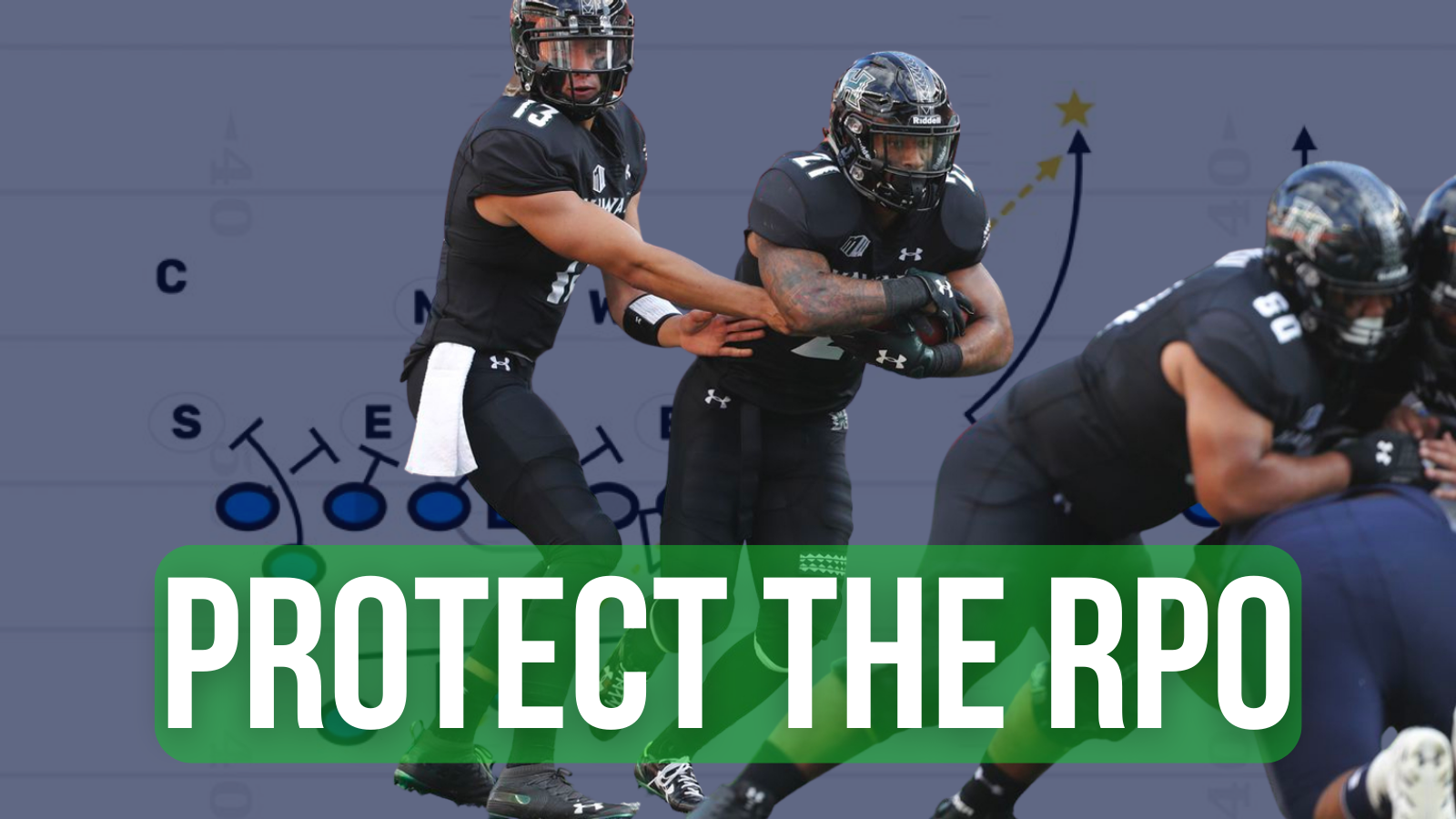
5 Ways to Protect the RPO
5 Ways to Protect the RPO


The Run-Pass Option (RPO) continues to pervade football at all levels in 2022. When it first became popular, defenses struggled to handle these types of plays. Offenses were at an advantage, and with correct decision making from the QB, either pre- or post-snap, the offense could just call an RPO and be right.
Since then, many types of answers have developed. And the hypothesis of not having a bad look to call RPO is not necessarily true anymore.
Furthermore, because of the nature of the attack, many balls thrown on RPO do not stretch the defense deep. Answers need to account for that defense that is reacting quickly to those level two throws or aligning tighter to take them away.
Here are some answers that can help protect the RPO.
The first answer is simply to tag an “and go” to the call. What was a bubble becomes a bubble-and-go. What was a slant becomes Sluggo or slant-and-go, etc.
Consequently, this play becomes a play action, or in this case, an RPO Action Pass which makes the defenders pay for getting nosey on the quick routes while taking away runs with the extra defender.
Wash U assistant coach Scott Mueller explains the “Go’s” here:
Additionally, having an answer to the teams that want to cover down and play man can present problems, so having some simple man beaters in your RPO menu can help keep your plays productive.
Western Michigan OC Eric Evans explains their approach here:
Akron Head Coach Joe Moorhead has used the RPO for a long time. Having the QB run game tagged with RPO allows the offense to have additional answers, as he illustrates in this clip:
Obviously, the boundary safety is one who becomes active in the run game and in rotations, so keying him can provide advantages and big plays for the offense.
Ole Miss OC Charles Wies Jr. explains the “C” Level RPO:
Retired state champion coach from Texas Todd Dodge liked tagging “Reno” in his RPO game. From their typical 20 personnel, it’s a slot-fade to the field (two receiver side) and a glance to the boundary.
In their RPO game, the QB is responsible for reading the seventh defender to the back’s side. This read allows a throw down the field based on how that defender triggers. It can essentially turn into the third level RPO if that defender is the safety.
The QB also has the option to check to a slide protection and drop back and throw the downfield concept. Adjusting the receivers is not necessary.
Coach Dodge explains it here:
Whether these answers are built in or you start with some similar strategies to add to your toolbox and keep your RPO game producing, finding the little changes will give you more mileage out of whatever is in your playbook. ![]()
Coach and Coordinator is an authoritative clearinghouse of information for the football coaching community. The Coach and Coordinator Difference begins with our service to coaches, not ourselves, and comes to life with our commitment to developing the 10% Coach at all levels of play. This process unlocks the full potential for football coaches everywhere, as well as their families, programs, and players. Our prolific content strategy, inclusive of podcasts, blogs, and courses, delivers uncommon immersive education and engagement opportunities to accelerate what’s possible for anyone willing to put in the work.